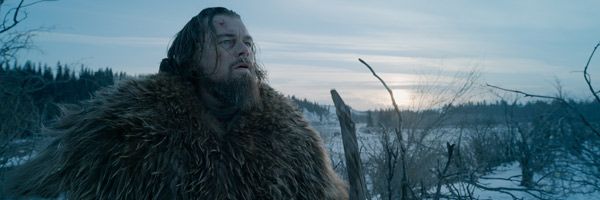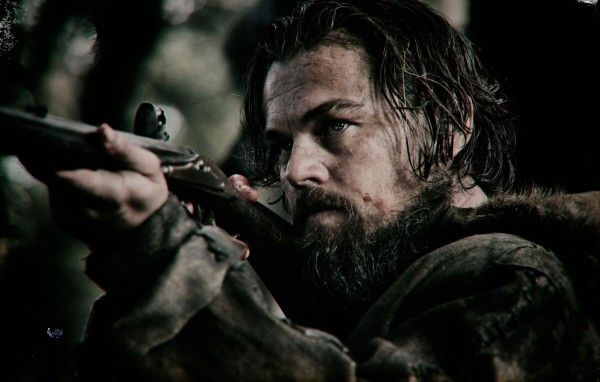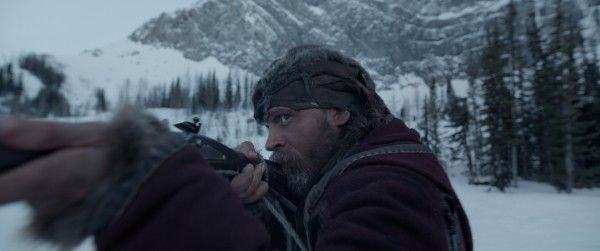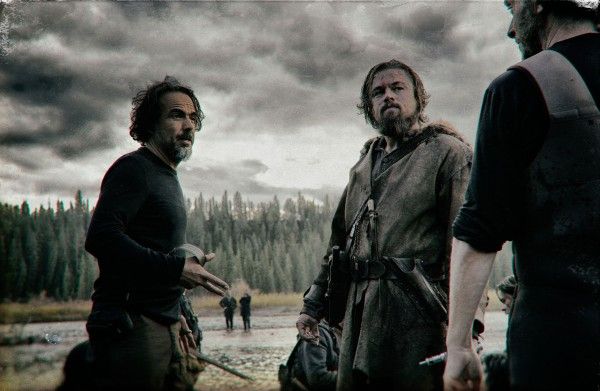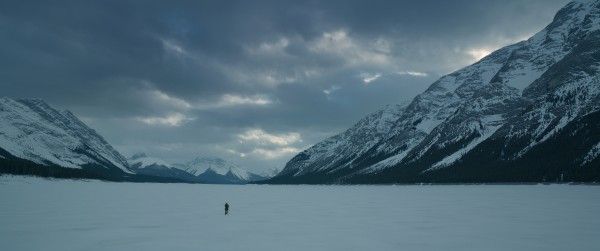Director Alejandro G. Iñárritu’s revenge drama The Revenant feels like one of those productions that’s going to make for a really good book. The filmmaker was already deep in pre-production by the time he started making the 2014 festival rounds for his eventual Best Picture, Best Director, Best Etc.-winning comedy Birdman, and word soon surfaced that he had big plans for The Revenant. They would be shooting the whole thing in sequence, in remote locations in Calgary, using only natural light. It was a herculean task to begin with, and then Mother Nature replied with a stern, "NOPE." When shooting the film’s opening scenes, which called for bare landscapes, there was an uncharacteristic deluge of snow. Then when it came time for production to shift to the snowy scenes, the snow was gone.
As a result, Iñárritu had to alter his plans to shoot in sequence, and seeing as how snow was an integral part of the final scenes, he had no choice but to break from filming and circle back around at a later date (just a few days from now, to be exact). When we caught up with co-star Tom Hardy in May, he revealed that they were due back on set in July to finish up, which marks nearly a year since filming began in September of 2014.
But the film is now nearly complete, and the first trailer impressed nearly everyone with its stunning cinematography (Emmanuel Lubezki is making a strong case for hat trick-ing the Best Cinematography Oscar this year) and intense performance by Leonardo DiCaprio. However, the actor recently revealed to Grantland that if you’re looking for a talky drama, The Revenant will leave you dissatisfied:
“It was a different type of challenge for me,” DiCaprio says, “because I’ve played a lot of very vocal characters. It’s something that I really wanted to investigate — playing a character that says almost nothing. How do you relay an emotional journey and get in tune with this man’s angst … without words?”
Iñárritu reiterated this sentiment, confirming that DiCaprio’s character is largely wordless:
“Honestly, Leo, he’s attacked by a bear, and after that, he becomes almost like a silent character: a lot of things going on, but no words,” Iñárritu notes. “That’s for me the essence of cinema: not to rely on the words, but images and emotions.”
The film is based on the true story of 1820s frontiersman Hugh Glass, whom DiCaprio portrays. After being attacked by a bear, he was left for dead by his two companions, after which he set out to track them down and enact his revenge. But Iñárritu wasn’t interested in telling a straight revenge story, so he made an addition to Glass’ arc:
“Revenge is a feeling [that] when you commit it, it leaves you empty. It’s not a wholesome emotion, and it’s not satisfying.” His stakes-raising solution was to create a son for Glass, named Hawk, by a relationship with a Pawnee woman: “I thought that a father-son relation, a filial relation, is much more complex and fulfilling — more empathy.”
For DiCaprio, the challenge not only of acting without much dialogue but of portraying a different kind of American drew him to the project:
“I tried to capture — or emulate on film — a different type of American that I haven’t seen on film very often,” DiCaprio says. “This [was] an unregulated, sort of lawless territory. It hadn’t been forged into the America that we know yet. It was still sort of up for grabs.”
From a technical standpoint, however, The Revenant has been mighty difficult. While he’s knee-deep in editing, Iñárritu still hasn’t shot the film’s final scene, which will now be taken care of during a six or seven-day shoot in Ushuaia, in the Tierra del Fuego region of Argentina near the South Pole:
“The snow melted down, literally, in front of our eyes,” Iñárritu says. “We experienced global warming; we were planning to shoot the ending scene in a location that supposedly will have snow …” he laughs. “[But there were] bees. So we had to shut down.”
And even without the weather issues, the decision to shoot using only natural light in the northern reaches of Canada meant they had precious time to capture each scene. If they screwed up, they had to do it all over again the next day:
“To pull off these complicated sequences, like a ballet, movement needed to be precise,” DiCaprio says. “When it came down to that nail-biting moment to capture that magic light, every day was like putting on a mini-piece of theater. If we lost that one hour, if we didn’t accomplish what we had to accomplish, we were there the next day. And oftentimes many of these locations were very remote. So it was a very intense set, because we knew we only had one shot every single day. Otherwise … we would be back there again.”
Whatever your thoughts on Iñárritu’s past films, there’s no denying the fact that The Revenant is shaping up to be his most ambitious project yet—and that’s on the heels of crafting a film out of a single take. Could the filmmaker be smack dab in the middle of the Oscar race just one year later? Time will tell, and The Revenant will likely have its debut at one of the fall film festivals so we should have early word in the next couple of months—assuming Iñárritu gets his last shot, that is. The film opens in theaters on December 25th.

